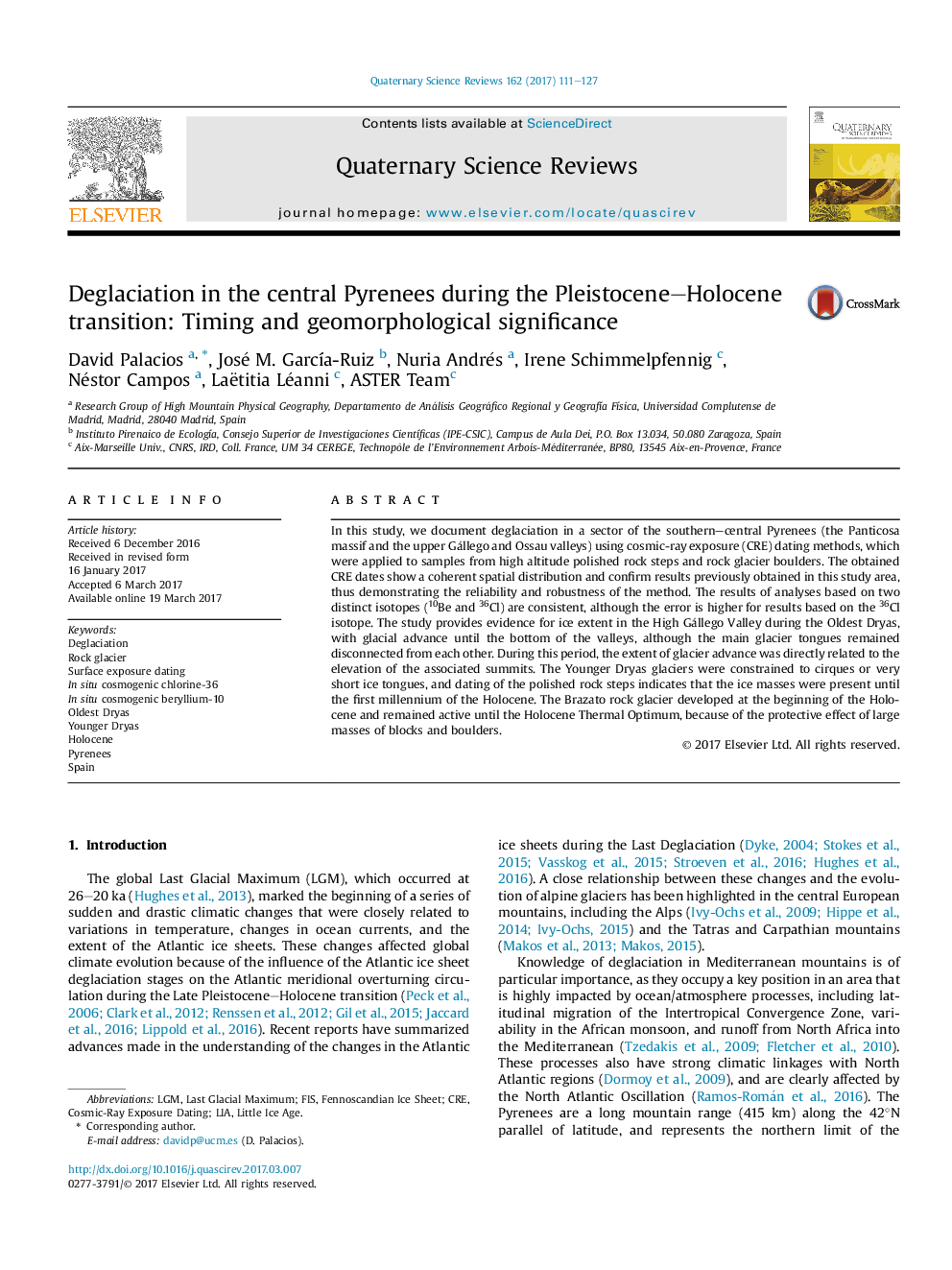| Article ID | Journal | Published Year | Pages | File Type |
|---|---|---|---|---|
| 5786632 | Quaternary Science Reviews | 2017 | 17 Pages |
Abstract
In this study, we document deglaciation in a sector of the southern-central Pyrenees (the Panticosa massif and the upper Gállego and Ossau valleys) using cosmic-ray exposure (CRE) dating methods, which were applied to samples from high altitude polished rock steps and rock glacier boulders. The obtained CRE dates show a coherent spatial distribution and confirm results previously obtained in this study area, thus demonstrating the reliability and robustness of the method. The results of analyses based on two distinct isotopes (10Be and 36Cl) are consistent, although the error is higher for results based on the 36Cl isotope. The study provides evidence for ice extent in the High Gállego Valley during the Oldest Dryas, with glacial advance until the bottom of the valleys, although the main glacier tongues remained disconnected from each other. During this period, the extent of glacier advance was directly related to the elevation of the associated summits. The Younger Dryas glaciers were constrained to cirques or very short ice tongues, and dating of the polished rock steps indicates that the ice masses were present until the first millennium of the Holocene. The Brazato rock glacier developed at the beginning of the Holocene and remained active until the Holocene Thermal Optimum, because of the protective effect of large masses of blocks and boulders.
Keywords
Related Topics
Physical Sciences and Engineering
Earth and Planetary Sciences
Geology
Authors
David Palacios, José M. GarcÃa-Ruiz, Nuria Andrés, Irene Schimmelpfennig, Néstor Campos, Laëtitia Léanni,
